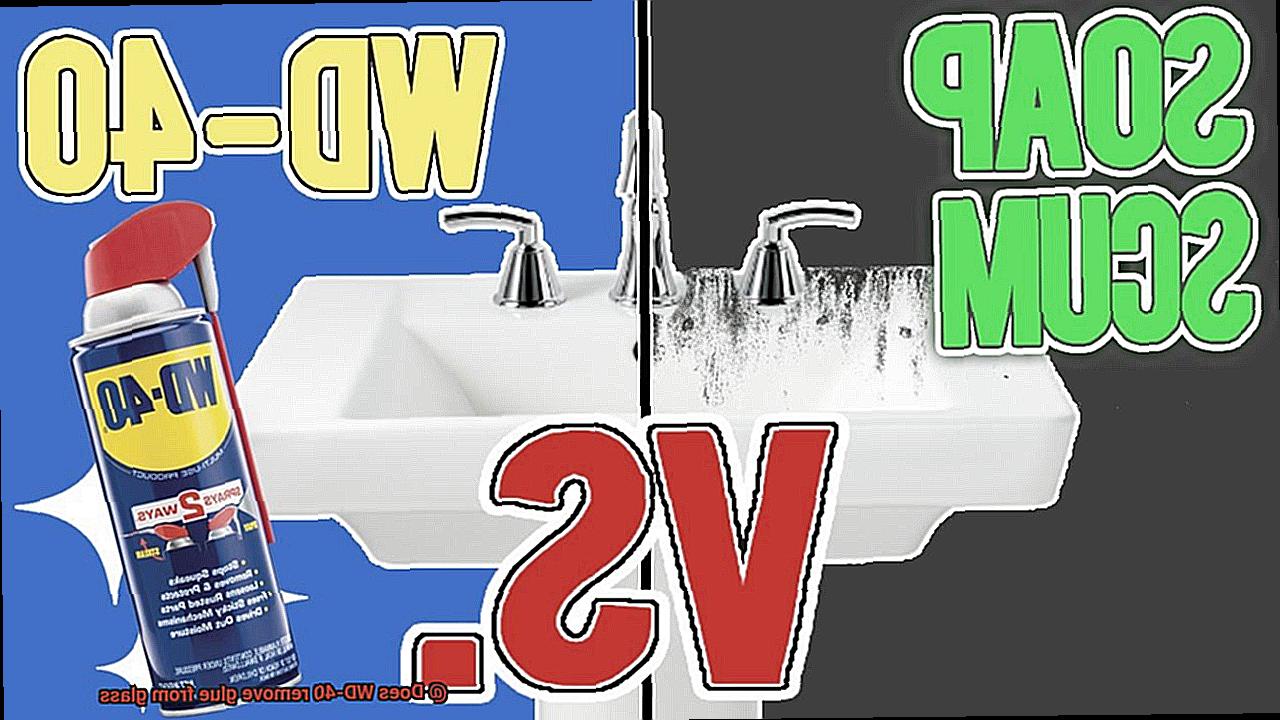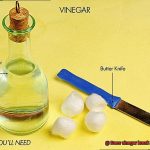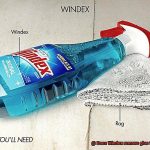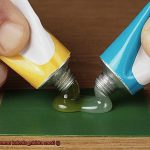Ever found yourself in a sticky situation trying to get rid of glue residue on your precious glass surfaces? It’s like the universe is playing a cruel joke, making it nearly impossible to scrape or scrub off that stubborn adhesive.
But fear not, my friend. I’ve got some exciting news for you.
Contents
- 1 What are the Properties of WD-40 That Make It Suitable for Removing Glue?
- 2 How to Use WD-40 for Removing Glue From Glass
- 3 Potential Limitations of Using WD-40 for Removing Glue From Glass
- 4 Alternative Methods for Removing Glue From Glass
- 5 Pros and Cons of Using WD-40 for Removing Glue from Glass
- 6 Tips and Tricks for Getting the Most Out of Using WD-40 For Removing Glue From Glass
- 7 Common Mistakes to Avoid When Using WD-40 For Removing Glue From Glass
- 8 Conclusion
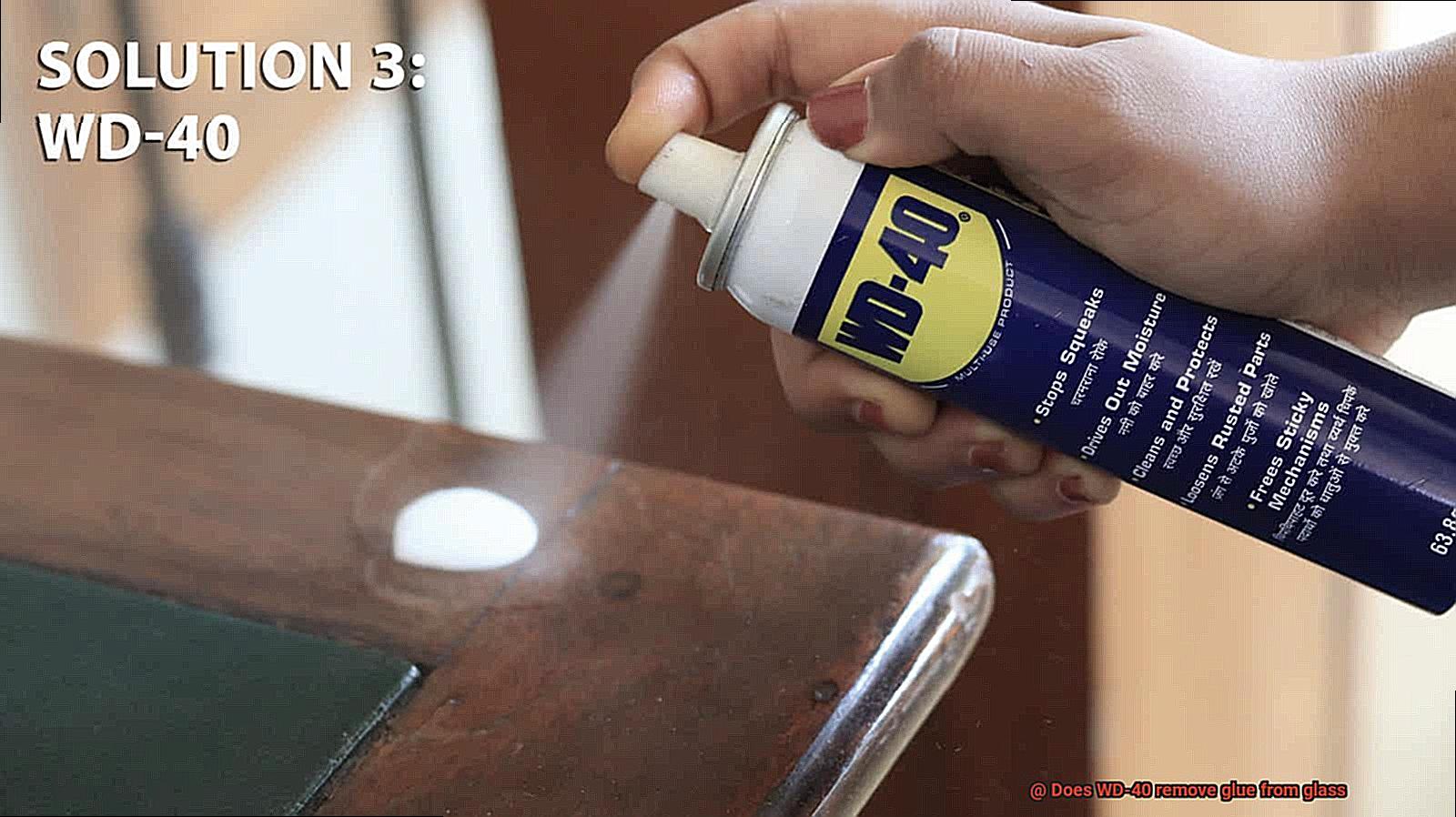
There’s a secret weapon that can make this whole process a breeze: WD-40, the superhero of household lubricants. In this blog post, we’re diving deep into the age-old question: does WD-40 remove glue from glass?
So, buckle up and join me on this adventure into the world of WD-40 as we uncover the truth about its mind-blowing glue-removing powers.
What are the Properties of WD-40 That Make It Suitable for Removing Glue?
When glue residue clings to delicate surfaces like glass, it can be a real headache. But fear not. There’s a household hero that comes to the rescue – WD-40. This versatile lubricant and cleaner is not just for squeaky hinges; it possesses several properties that make it perfect for tackling even the most stubborn glue. Let’s dive into the magic of WD-40 and explore why it’s the go-to solution for glue removal.
Superb Solvent Properties:
WD-40 contains powerful solvents called petroleum distillates. These solvents have the remarkable ability to dissolve or break down other substances, making them easier to remove. When applied to glue, WD-40 efficiently dissolves the adhesive components, loosening its grip on the surface.
Low Surface Tension:
WD-40 has a secret weapon – its low surface tension. This fancy term refers to the cohesive forces between liquid molecules. With low surface tension, WD-40 can effortlessly spread out and penetrate narrow spaces where glue may be hiding. It sneaks into those tiny crevices and gaps, making glue removal a breeze.
Lubricating Effect:
WD-40 is renowned for its lubricating properties, reducing friction between surfaces. When applied to glue, it works its magic by loosening the bond between the adhesive and the surface. This allows you to peel or scrape off the glue without causing any damage.
Effective Cleaning Abilities:
Not only does WD-40 dissolve glue, but it also cleans up any residue left behind. Say goodbye to sticky or greasy marks. WD-40 leaves surfaces clean and free from any unsightly remnants. Glass surfaces, in particular, benefit from this cleaning prowess as they regain their transparency and clarity.
How to Use WD-40 for Removing Glue From Glass
Glue residue on glass surfaces can be a stubborn and unsightly problem. Fortunately, there’s a simple solution that can make the removal process a breeze – WD-40. This versatile household staple is not just for lubrication; it can also work wonders in removing glue from glass. In this guide, we will walk you through the step-by-step process of using WD-40 to tackle that sticky situation.
Step 1: Prepare the Glass Surface
Before diving into the glue removal process, it’s essential to prepare the glass surface properly. Start by wiping the area with a cloth dampened in warm soapy water. This will ensure that the surface is clean and free from any dirt or debris that may interfere with the adhesive removal.
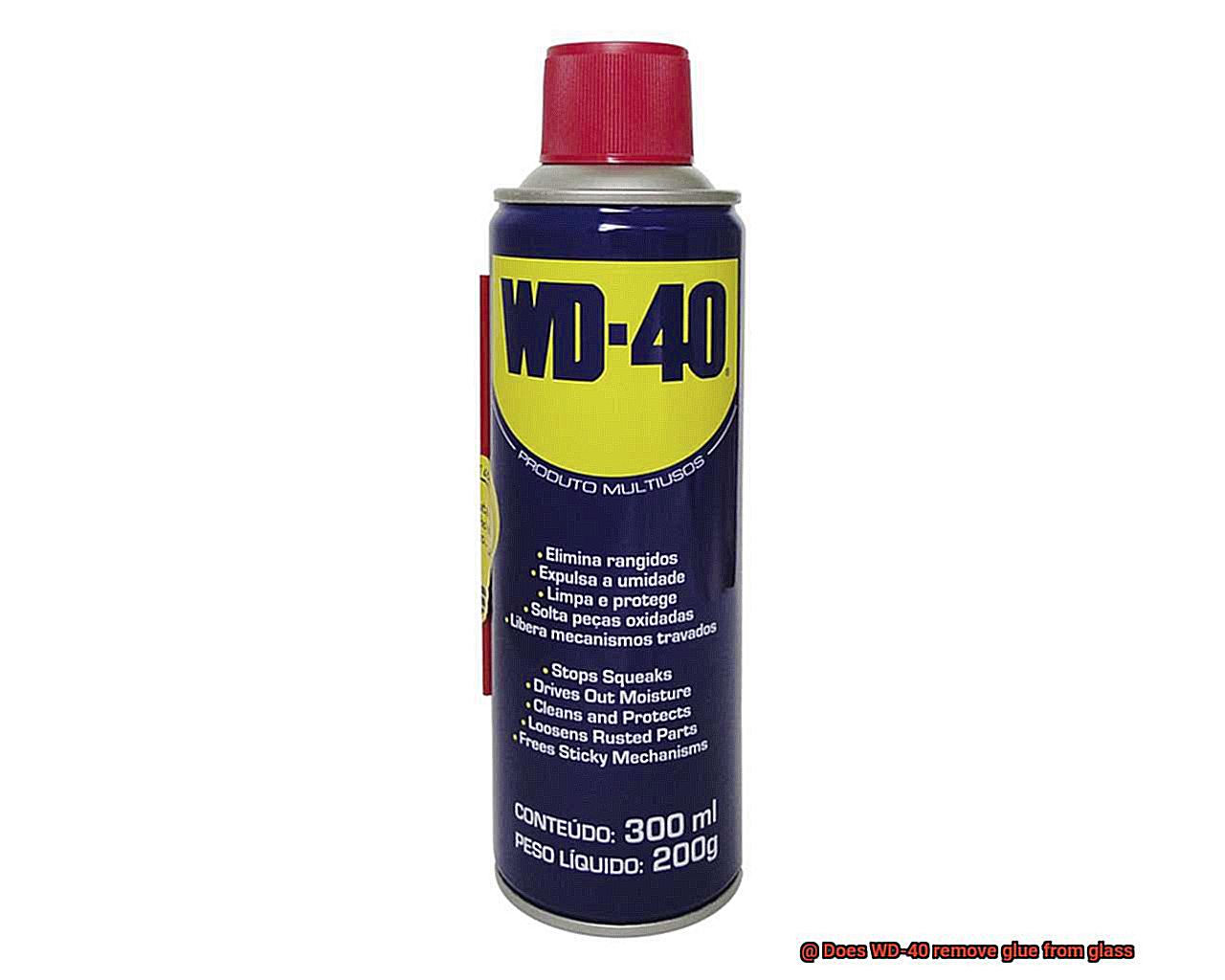
Step 2: Shake and Spray
Now, grab your can of trusty WD-40 and give it a good shake to ensure that the product is well-mixed. Then, spray a small amount of WD-40 directly onto the glue residue. Remember, less is more when it comes to application – a small amount will do just fine.
Step 3: Allow WD-40 to Work Its Magic
Give the WD-40 some time to penetrate the adhesive and loosen its bond with the glass surface. Wait patiently for about 5-10 minutes, allowing the product to work its magic.
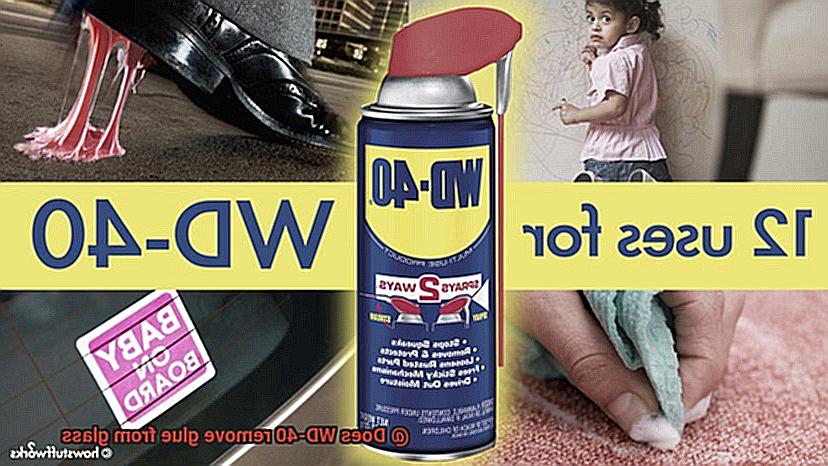
Step 4: Gently Scrub
After the designated waiting time, take a soft cloth or sponge and gently scrub the glue residue in a circular motion. You’ll notice that the adhesive starts to loosen and come off easily, thanks to WD-40’s solvent properties.
Step 5: Repeat if Necessary
For stubborn or thicker layers of glue, you may need to repeat steps 2 to Apply more WD-40 and allow it to sit for a longer period to ensure maximum effectiveness. Persistence is key in achieving a clean and adhesive-free glass surface.
Step 6: Clean and Dry
Once all the glue has been successfully removed, give the glass surface one final clean with warm soapy water to eliminate any remaining residue from the WD-40. To finish off, dry the glass thoroughly with a clean cloth, ensuring a streak-free shine.
Potential Limitations of Using WD-40 for Removing Glue From Glass
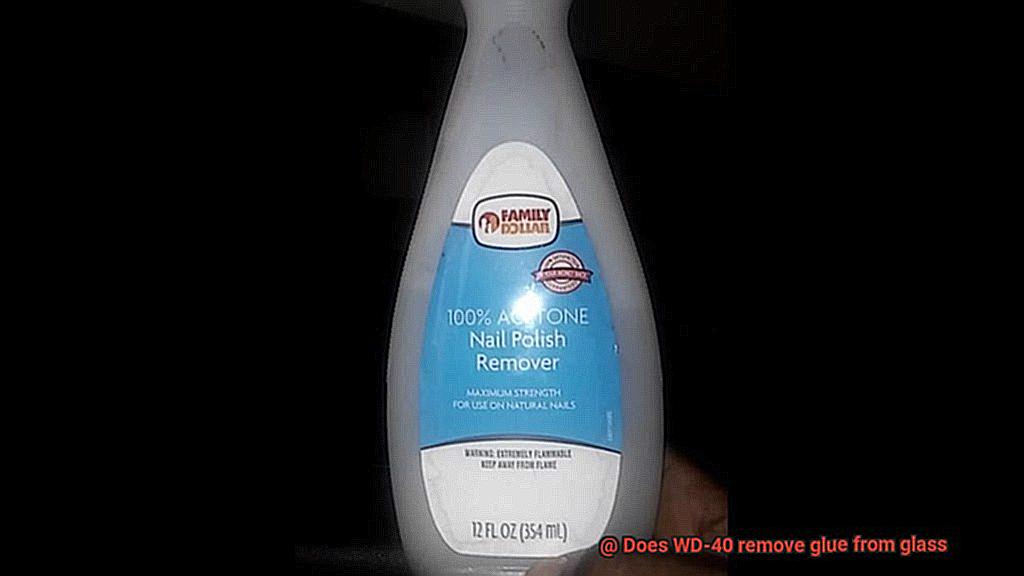
WD-40 is a versatile household product that has gained popularity for its various applications. However, when it comes to removing glue from glass, there are several limitations to consider. In this article, we will delve into the potential drawbacks of using WD-40 for this purpose and explore alternative solutions.
Effectiveness on Different Glue Types:
While WD-40 can effectively tackle many adhesive residues, it may not be suitable for certain types of glues. Strong bonding glues like epoxy or super glue often require specialized solvents or adhesive removers specifically designed to break down these adhesives.
Incomplete Removal:
If the glue has dried and hardened over time, WD-40 may struggle to fully dissolve or break down the residue. This can leave behind a sticky or hazy film on the glass surface, which is far from ideal.
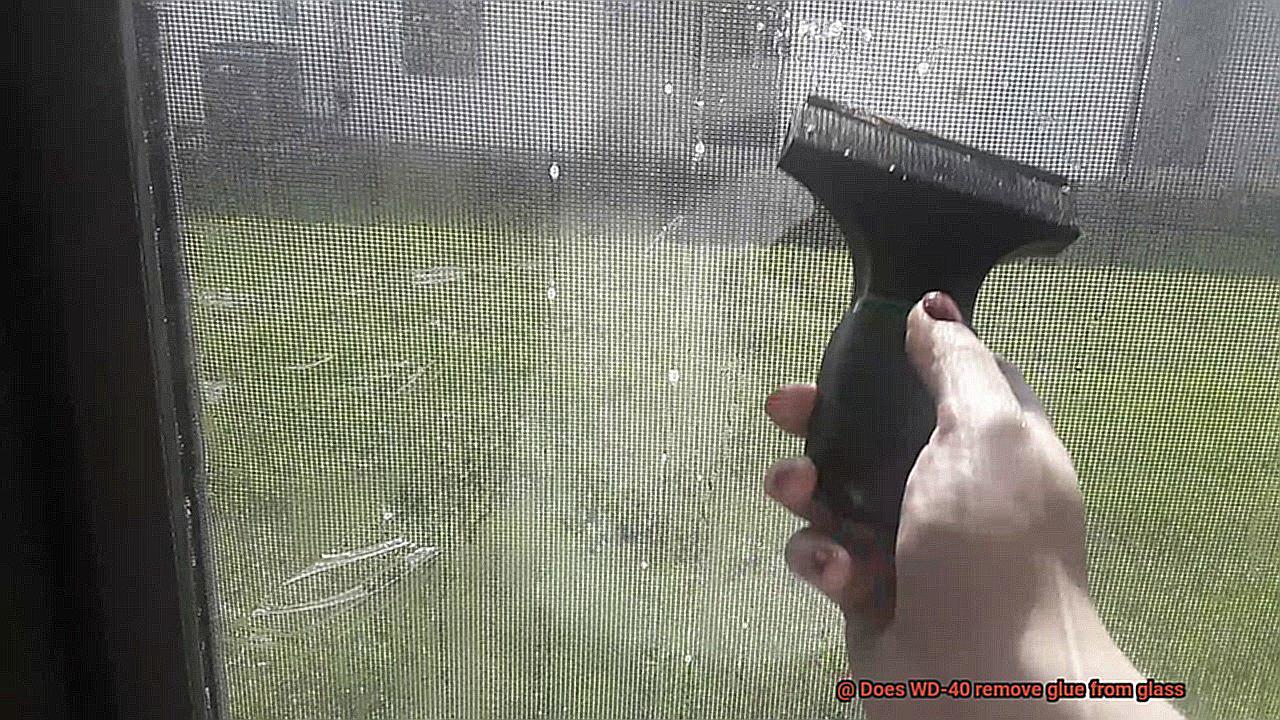
Oily Residue:
As an oil-based lubricant and cleaner, WD-40 can leave behind an oily residue on glass surfaces. Removing this residue can be challenging and may result in streaks or smudges that make the glass appear even more unsightly.
Safety Concerns:
While WD-40 is generally safe for use on most surfaces, including glass, prolonged exposure to certain chemicals in the product can potentially damage or etch the glass surface. It is always advisable to test a small area before applying WD-40 to larger portions of glass to avoid any potential damage.
Lingering Odor:
WD-40 has a distinctive odor that some individuals may find overpowering or unpleasant. Even after cleaning the glass surface, this odor can linger, which might not be desirable in certain settings such as homes or offices.
Lack of Specialization:
It is important to remember that WD-40 is not specifically formulated for removing glue from glass. There are other adhesive removers available on the market that are designed specifically for this purpose. These products often contain stronger solvents or chemicals that are more effective in breaking down and removing glue without causing damage to the glass surface.
Alternative Methods for Removing Glue From Glass
Don’t let sticky glue ruin the beauty of your glass surfaces. Bid farewell to pesky adhesive residue with alternative methods that are just as effective as WD-40. In this article, we will explore creative solutions, ranging from common household items to specialized adhesive removers. Get ready to tackle stubborn glue head-on and restore the sparkle to your glass.
Rubbing Alcohol:
Unleash the power of rubbing alcohol or isopropyl alcohol, a household hero that can work wonders on glue. Apply the alcohol directly onto the sticky mess and watch as it dissolves the adhesive’s grip. Let it sit for a few minutes, allowing the magic to happen, then gently scrub away the residue using a soft cloth or sponge.
Nail Polish Remover:
Who knew that acetone-based nail polish removers could double as glue erasers? Grab a cotton ball or swab and soak it in the nail polish remover, then apply it to the glue. Let it work its magic for a few minutes, softening the adhesive’s hold. With a clean cloth, wipe away the softened glue, revealing a pristine glass surface.
Vinegar Solution:
Turn to nature’s secret weapon against sticky situations – vinegar. Create a solution by mixing equal parts vinegar and water. Apply this mighty elixir onto the glue using a cloth or sponge, letting it soak in for a few minutes. Then, with decisive strokes, wipe away the residue and marvel at the glue-free glass.
Plastic Scraper or Old Credit Card:
For stubborn glue stains that refuse to budge, unleash the power of a plastic scraper or an old credit card. Gently scrape away at the adhesive, exercising caution to avoid scratching the delicate glass surface. With each careful stroke, bid adieu to lingering glue and unveil the glass’s true radiance.
Commercial Adhesive Removers:
When all else fails, call in the cavalry – specialized adhesive removers. These powerful products are designed specifically to combat glue on various surfaces, including glass. Follow the instructions provided and take a moment to test a small, inconspicuous area before proceeding. Let these superheroes do their work, banishing glue residue with ease.
Pros and Cons of Using WD-40 for Removing Glue from Glass
If you’re looking for a quick and effective solution to remove glue from your glass surfaces, WD-40 can be a handy tool in your arsenal. However, before you reach for that familiar red and yellow can, it’s essential to consider the pros and cons of using WD-40 for this purpose.
Let’s start with the advantages:
- Effectiveness: One of the main reasons why WD-40 is a popular choice for removing glue from glass is its effectiveness. WD-40 contains solvents that can break down the adhesive and make it easier to remove. It can tackle a wide range of adhesives, including stubborn ones like super glue. This means you can rely on WD-40 to dissolve the glue and restore your glass to its former glory.
- Versatility: WD-40 is versatile when it comes to glue removal. Whether you’re dealing with windows, mirrors, or glassware, WD-40 can be safely used on most types of glass surfaces without causing damage or leaving behind residue. This versatility makes it a convenient option for various applications around your home.
- Accessibility and Affordability: WD-40 is easily accessible and affordable. You can find this multi-purpose product in most hardware stores, supermarkets, and online retailers. Its availability and reasonable price make it a cost-effective solution for removing glue from glass. Plus, since WD-40 has multiple uses, you’ll likely find other tasks around the house where it comes in handy.
- Time-Saving: Using WD-40 is also a time-saving endeavor. The process is simple: spray or apply the product to the glue residue, allow it to penetrate for a few minutes, and then wipe it away with a cloth or paper towel. Compared to other methods of adhesive removal, using WD-40 generally requires minimal effort and delivers quick results.
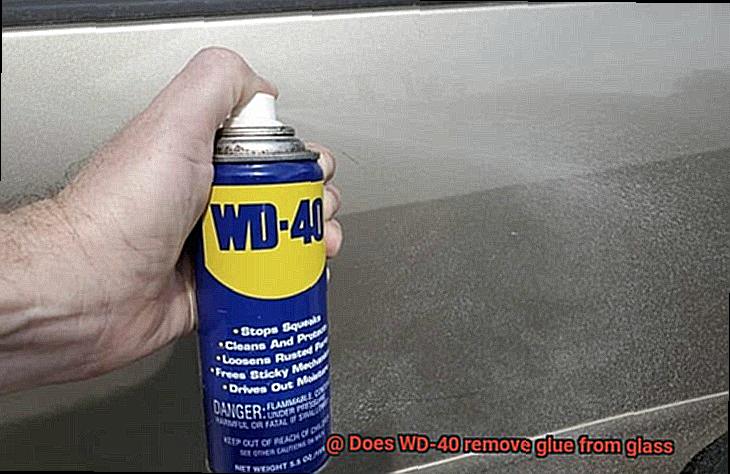
However, there are some cons to keep in mind when using WD-40 for removing glue from glass:

- Strong Odor: One potential drawback is the strong odor of WD-40. The distinctive smell can be unpleasant or overwhelming for some individuals. To mitigate this issue, it’s important to use the product in a well-ventilated area or consider wearing a mask to avoid inhaling the fumes.
- Oily Residue: WD-40 may leave behind an oily residue on the glass surface after removing the glue. While soap and water can easily clean this residue, it does add an extra step to the process. This is something to consider if you’re looking for a residue-free solution.
- Ineffectiveness on Certain Adhesives: WD-40 may not work as effectively on certain types of adhesives, especially those that have dried for an extended period or are particularly stubborn. In these cases, alternative methods or specialized adhesive removers may be necessary to achieve complete glue removal.
Tips and Tricks for Getting the Most Out of Using WD-40 For Removing Glue From Glass
WD-40 is a versatile product that can be used for various purposes, including removing glue from glass surfaces. However, using it correctly is essential to achieve the best results without damaging the glass. In this guide, we will provide you with some tips and tricks to maximize the effectiveness of WD-40 when removing glue from glass surfaces.
Prep the Glass Surface:
Before using WD-40, it’s crucial to ensure that the glass surface is clean and free from any dirt or debris. Think of it as preparing a canvas before painting a masterpiece. Use a mild detergent or glass cleaner to remove any oils or residues that may hinder the effectiveness of WD-40. A clean surface will allow WD-40 to work more effectively on the glue, ensuring a clean and pristine finish.
Protect Yourself:
When using WD-40 for glue removal, it’s important to protect yourself. The fumes can be overwhelming and cause skin irritation. Don’t worry though; this is an easy fix. Wear gloves and work in a well-ventilated area to avoid any discomfort or health risks. Safety first, always.
Apply WD-40:
Now comes the fun part – applying WD-40. Spray a small amount of WD-40 directly onto the glue stain. It’s like magic in a bottle. But remember, less is more. Start with a small area first to test its effectiveness and avoid overspraying onto surrounding areas. This will prevent leaving a greasy residue that can be difficult to remove later on. Precision is key.
Let it Sit:
Patience is a virtue, especially when it comes to removing glue from glass surfaces. Allow the WD-40 to sit on the glue for a few minutes, giving it time to penetrate and loosen the adhesive. During this time, resist the temptation to touch or disturb the area. Let WD-40 work its magic while you take a deep breath and relax.
Gently Scrub:
After letting it sit, it’s time to reveal the results. Grab a soft cloth or non-abrasive sponge and gently scrub the area where the glue is located. Apply moderate pressure in circular motions, as if you were giving the glass a gentle massage. Be gentle yet firm, like a skilled masseuse working out those knots. Avoid using abrasive materials or scrubbing too vigorously to prevent scratching the glass surface. Remember, we want to remove the glue, not damage the glass.
Repeat if Necessary:
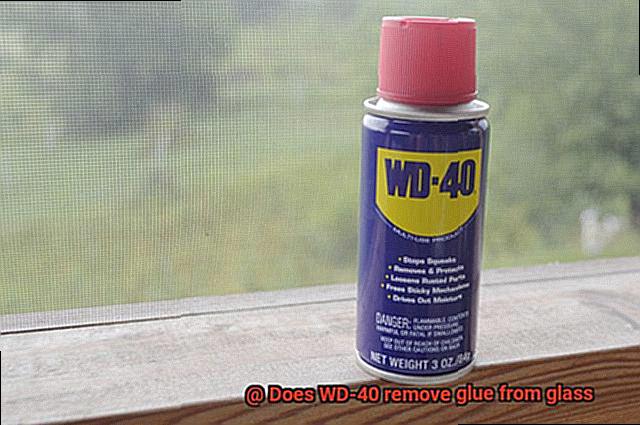
Sometimes, glue can be stubborn like a determined toddler refusing to eat vegetables. If the glue is not budging easily, don’t give up. Reapply WD-40 and let it sit for a longer period. It may take a few attempts before all the glue is completely removed. Persistence pays off.
Common Mistakes to Avoid When Using WD-40 For Removing Glue From Glass
Common Mistakes to Avoid When Using WD-40 For Removing Glue From Glass
When it comes to removing glue from glass, WD-40 is a popular choice due to its versatility and effectiveness. However, there are some common mistakes that people make when using WD-40 for this purpose. In this article, we will discuss these mistakes and provide you with tips on how to avoid them, so you can achieve the best results.
- Not applying enough WD-40: One of the biggest mistakes is not using enough of the product. It’s important to generously spray WD-40 onto the glue and let it sit for a few minutes. This allows the product to penetrate and loosen the adhesive, making it easier to remove. If you only apply a small amount, it may not be effective in breaking down the glue.
- Not giving it enough time: Patience is key when using WD-40 to remove glue from glass. After spraying the product onto the glue, wait for a few minutes before attempting to remove the adhesive. This gives WD-40 enough time to dissolve the glue and make it easier to scrape off. Rushing the process may result in incomplete removal of the glue.
- Using excessive force or scraping tools: It’s tempting to use sharp objects or abrasive materials to scrape off stubborn adhesive, but this can damage the glass surface. Instead, use a plastic scraper or a soft cloth to gently lift off the softened glue. Applying too much force or using improper tools can lead to scratches or other damage.
- Neglecting proper cleaning: After removing the glue, it’s important to clean the glass properly. WD-40 leaves behind an oily residue that can smear on the glass if not adequately cleaned. Use warm soapy water and a clean cloth to wash the glass thoroughly, then dry it with a separate clean cloth.
- Not testing on a small area first: Different types of glass may react differently to WD-40. It’s crucial to test the product on a small, inconspicuous area of the glass before applying it to a larger area. This will help ensure that it doesn’t cause any damage or discoloration.
- Also Read: How to Remove Glue From Mirror?
Conclusion
In conclusion, WD-40 is indeed an effective solution for removing glue from glass.
Its powerful formula effortlessly dissolves the sticky residue, leaving your glass surface clean and pristine. With just a few sprays and a gentle wipe, you can bid farewell to those stubborn adhesive marks that mar the beauty of your glassware or windows.
Say goodbye to tedious scraping or scrubbing, as WD-40 works its magic in seconds. Trust this versatile product to restore the clarity and shine of your glass surfaces with ease.
So next time you find yourself dealing with glue on glass, reach for that trusty can of WD-40 and witness its remarkable adhesive-removing prowess firsthand.

